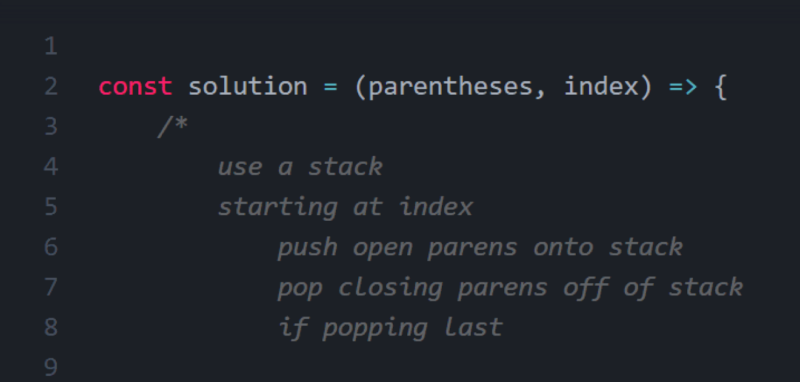Tech skill
React Skills
All about React
ReactJS is a popular JavaScript library maintained by Facebook designed for highly interactive single-page applications (SPA). Using what is called the Virtual DOM, React can quickly and efficiently manipulate DOM elements. React is primarily used with JSX, allowing developers to use an HTML-like syntax to describe the final render state of their application.
What to use React forReact offers a broad range of capabilities and features, making it suitable for various web development scenarios. Here are some key applications of React:
- Single Page Applications (SPAs): React is commonly used for building single page applications (SPAs) where the entire application runs in the browser and interacts with the server via APIs. With React Router for navigation and state management libraries like Redux or MobX, developers can create SPAs with smooth navigation, fast rendering, and responsive user interfaces.
- Progressive Web Applications (PWAs): React is ideal for building progressive web applications (PWAs) that provide a native-like experience on the web. With tools like Create React App and Next.js, developers can create PWAs that are fast, reliable, and installable, enabling users to access them offline and receive push notifications.
- Server-Side Rendering (SSR): React supports server-side rendering (SSR) where the initial HTML markup is generated on the server and sent to the client, improving performance and SEO. With frameworks like Next.js and Gatsby, developers can build SSR applications that render quickly, index well on search engines, and provide a better user experience.
- Cross-Platform Development: React can be used for building cross-platform applications for web, mobile, and desktop. With libraries like React Native and Electron, developers can write React components once and deploy them across multiple platforms, leveraging native APIs and capabilities to create rich and immersive experiences.
- Component Libraries and UI Frameworks: React is used for building component libraries and UI frameworks that provide reusable UI components and design systems. With tools like Material-UI and Ant Design, developers can create consistent and visually appealing user interfaces that adhere to design principles and accessibility standards.
Companies of all sizes use Hired to find engineers with React skills
What is a React developer?Here’s what it means to be a React developer:
- Proficiency in React: A React developer is fluent in writing React code, including understanding React’s syntax, JSX syntax, and component lifecycle methods. They are familiar with React’s core concepts like components, props, state, and context, and know how to use them effectively to build reusable and maintainable UI components.
- Component-Based Architecture: React developers have expertise in designing and implementing component-based architectures for web applications. They understand how to break down complex user interfaces into smaller, composable components, and how to manage component state and props to create dynamic and interactive user experiences.
- State Management Skills: React developers have skills in managing application state using state management libraries like Redux, MobX, or React Context API. They know how to centralize and synchronize application state across components, handle asynchronous actions, and implement complex data flows to maintain a predictable state tree.
- Responsive Design and Accessibility: React developers have skills in designing responsive and accessible user interfaces that adapt to different screen sizes and devices. They understand responsive design principles like fluid grids, flexible layouts, and media queries, and accessibility standards like ARIA roles and attributes, and know how to apply them to ensure a seamless user experience for all users.
- Tooling and Development Workflow: React developers are familiar with the tooling and development workflow for React development, including setting up development environments, using package managers like npm or Yarn, and debugging code with browser developer tools. They know how to use build tools like Webpack or Parcel to bundle and optimize React applications for production deployment.
Here are some of the most important skills for React developers in 2024:
- Advanced React Patterns and Techniques: React developers need skills in advanced React patterns and techniques for building scalable and maintainable applications. They should be familiar with patterns like render props, higher-order components, hooks, and suspense, and know how to use them effectively to solve common problems and avoid pitfalls.
- Performance Optimization: React developers should have skills in performance optimization techniques for improving the rendering performance and runtime efficiency of React applications. They should understand performance bottlenecks like unnecessary re-renders, inefficient DOM updates, and memory leaks, and know how to optimize components and data fetching strategies to achieve better performance.
- Server-Side Rendering (SSR) and Hydration: React developers need skills in server-side rendering (SSR) and client-side hydration for optimizing the initial render and navigation performance of React applications. They should know how to set up SSR with frameworks like Next.js, and how to handle client-side hydration to rehydrate server-rendered content and manage client-side routing and state.
- Cross-Platform Development: React developers should have skills in cross-platform development for building applications that run on web, mobile, and desktop platforms. They should be familiar with frameworks like React Native and Electron, and know how to write platform-specific code and APIs to access native device features and capabilities.
- Testing and Debugging: React developers need skills in testing and debugging React applications to ensure code quality and reliability. They should be familiar with testing frameworks like Jest and React Testing Library, and know how to write unit tests, integration tests, and end-to-end tests for React components and user interactions.
React resources
Check out our resources to continue sharpening your React skills.
Hired profiles help developers showcase their top tech skills
After passing Hired skills assessments, candidates have the chance to showcase their skills to employers. They can opt to present an ‘Assessments’ badge on their profile. Candidates may take various assessments including Programming Skills, Full Stack, Backend, Frontend, iOS, Android, Debugging, Dev Ops Generalist, and Dev Ops AWS.
Find React jobs on Hired.
Hiring React developers can bring numerous benefits to your organization:
- Rapid Development: React developers bring expertise in building interactive and dynamic user interfaces quickly and efficiently, enabling faster development cycles and time-to-market for your web applications.
- Scalability and Maintainability: React developers excel at building scalable and maintainable applications with reusable and composable components, reducing code duplication and improving code readability and maintainability over time.
- Cross-Platform Compatibility: React developers can build applications that run on web, mobile, and desktop platforms using a single codebase, leveraging React Native and Electron to target different platforms and form factors seamlessly.
Looking for candidates skilled in React? Technical assessments are a multi-pronged solution. They allow you to streamline the hiring process and reduce bias with tech skill-focused benchmarks.
Hired Assessments offer a library of hundreds of questions and customizable coding challenge campaigns tailored to technical preferences. Centralize and standardize your evaluation process as you surface top talent with specific, hard-to-find skills.
See how Mastercard and Axon used Hired Assessments to vet top candidates.
Resources you’ll love

Need A Technical Assessments Do-Over? How To Assess Tech Skills
Technical interview alternatives for better skill-based hiring outcomes In today’s...

Hiring a Data Analyst? What to Look for in Top Candidates Now
Hiring the right data analyst is crucial for your business. It’s like having a skilled...

Software Engineer Tech Skills in Demand: Upskilling Support Advice
In the first installment of our 2024 Software Engineer Trends series, we highlighted new data on...








